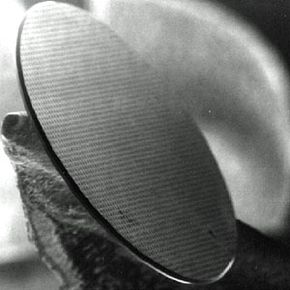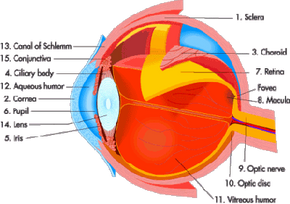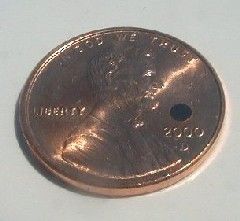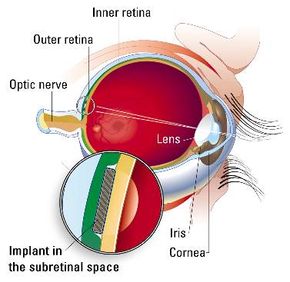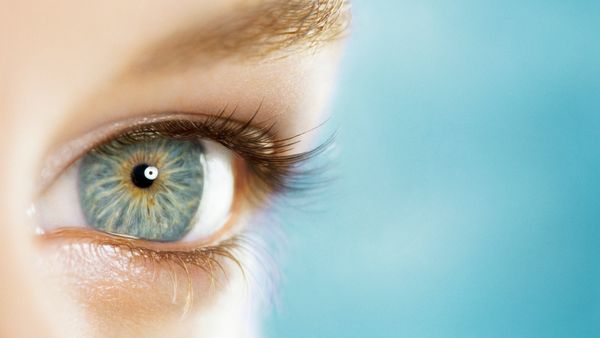Even if you wear eyeglasses, your vision is probably good enough that you can recognize the small letters on this page. Text on most computer screens is about 3 millimeters tall and 2 mm wide (.12 x .08 inches). As you read this one sentence, you are probably oblivious to the thousands of pieces of visual information that your eyes are gathering each second. Just in the retina alone, there are millions of cells at work right now acting as photoreceptors reacting to light, similar to how a camera works to capture images on film.
The retina is a thin layer of neural tissue that lines the back wall inside the eye. Some of these cells act to receive light, while others interpret the information and send messages to the brain through the optic nerve. This is part of the process that enables you to see. In damaged or dysfunctional retinas, the photoreceptors stop working, causing blindness. By some estimates, there are more than 10 million people worldwide affected by retinal diseases that lead to loss of vision.
Advertisement
Until now, those who lost their vision to retinal disease would have had little hope of regaining it. But technological breakthroughs could soon give back the gift of sight. Several groups of scientists have already developed silicon microchips that can create artificial vision. In this article, we will examine how your retinas work and why blindness caused by retinal disease no longer means the loss of vision.
Advertisement
